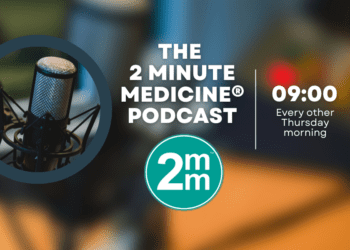Overview of the 2014 measles outbreak in Ohio
1. The measles outbreak was largely contained to the unvaccinated Amish community despite interaction between Amish and largely vaccinated non-Amish communities, suggesting high baseline measles vaccination rates limited further spread of measles.
2. Early identification of a measles outbreak and initiation of public health control measures (community vaccinations, infectious persons’ isolation/quarantining) are important for mitigating measles outbreaks.
Evidence Rating: 4 (Below Average)
Study Rundown: While endemic measles has been eliminated in the US since 2000, US cases still arise due to traveler contact and transmission in endemic countries. Measles control has been achieved in the US and other countries with high vaccination rates and public health control measures when cases are detected. When measles outbreaks do occur, they are seen where many people are unvaccinated. In 2014 a measles outbreak occurred in a largely unvaccinated Amish community in Ohio and this study looked to characterize the progression of the outbreak both before and after recognition and control measures were implemented by public health official.
Unvaccinated patients had returned from the Philippines, a country with endemic measles, on March 21, 2014. The patients presented with fever, cough, coryzea, conjunctivitis, and a maculopapular rash. An evaluation at the local hospital showed thrombocytopenia, and a diagnosis of dengue was given. After 12 additional Amish patients presented with similar symptoms measles was considered the likely cause and was reported to the local health department on April 21. During the next 4 months 383 cases were confirmed as measles. Prior to the outbreak 89% of those diagnosed were unvaccinated, while only 4.4% of young Ohio children had not received a measles vaccine. Public health responses included vaccination distribution and isolation or infectious patients.
Click to read the study, published today in NEJM
Relevant Reading: Measles – the epidemiology of elimination
In-Depth [case series]: This study evaluated case patients from March 24 to September 3, 2016. Cases were diagnosed with measles using either a serum antibody assay or detection of measles RNA from a sample. The first 2 patients returned to Ohio from the Philippines, a measles endemic country, on March 21, 2016. Their symptoms included fever, cough, coryza, or conjunctivitis, and hospital studies showed thrombocytopenia leading to an initial diagnosis of dengue. Subsequently, 12 more Amish people presented similarly, an evaluation of measles was made, and the local health department was contacted on April 21. Later laboratory analysis confirmed most (91%) of evaluated case specimens showed a measles strain endemic to the Philippines in 2014, while the other cases were believed to be vaccine associated reactions. Overall, the outbreak lasted approx. 4 months, had 573 suspected measles cases, and measles was confirmed in 383 (67%) cases. Of the confirmed cases, 380 (99%) of the cases were in the Amish population. While 95.6% of young children in Ohio had received at least 1 measles vaccination, only 14% of the Ohio Amish community was estimated to have received the vaccine prior to the outbreak. The crude attack rate was 12/1000 in the Amish population (US attack rate is <1/million), with the 0-39 year-old age group having a higher attack rate (12-15/1000) and the 39+ age groups having a lower attack rate (40-54, 8/1000; 55+, 0/1000). Public health response included a vaccination campaign (12 229 MMR (measles-mumps-rubella) doses delivered to 10 644 people), identification of case contacts and an offer for vaccination, and providing advice for isolation/quarantining of infectious patients. This was the largest US based measles outbreak in more than two decades, and transmission was notable for it being mainly limited to a largely unvaccinated population. High baseline vaccination levels and prompt public health response are major factors in mitigating measles outbreaks.
Image: PD
©2016 2 Minute Medicine, Inc. All rights reserved. No works may be reproduced without expressed written consent from 2 Minute Medicine, Inc. Inquire about licensing here. No article should be construed as medical advice and is not intended as such by the authors or by 2 Minute Medicine, Inc.





![Nanoparticle delivery of aurora kinase inhibitor may improve tumor treatment [PreClinical]](https://www.2minutemedicine.com/wp-content/uploads/2016/02/20541_lores-75x75.jpg)